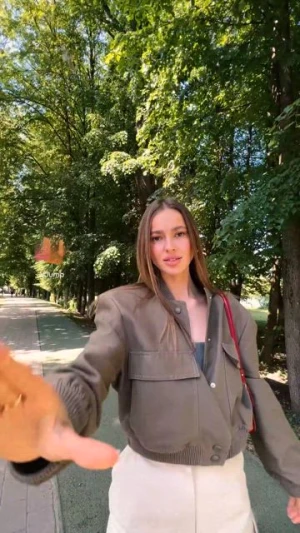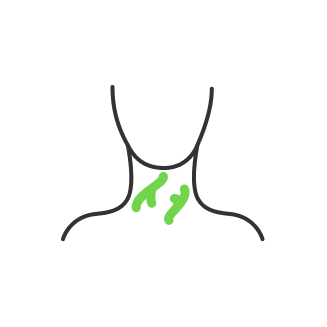What is AI and how art generators work?

- Demystifying Artificial Intelligence
- The Marriage of Art and Algorithms
- How Art Generators Work
- Neural Networks for AI Artwork
- Generative Adversarial Networks (GANs)
- Deep Learning
- Neural Networks and Creativity
- Machine Learning Algorithms Evolution: From Noise to Art
- The Creative Loop: User and AI Collaboration
- Challenges and Ethical Considerations
- Conclusion
In the digital age, the fusion of technology and creativity has ushered in a new era of innovation, epitomized by the emergence of AI art generators. These tools have transformed the landscape of visual creativity, making it pertinent to explore what AI is and how art generators work. In this guide we are going to demystify what is AI art and explore the way it works, we answer ethical concerns and see how AI collaborates with the creative loop and what opportunities it all presents to us.
Demystifying Artificial Intelligence
The times when artificial intelligence was considered something from the realm of science fiction are over. Nowadays, AI is already firmly embedded in our everyday life and is available not only to developers but also to ordinary users. Thus AI can be used in everything that humans used to be able to do, from text generation to image generation and even faking actual personalities of famous people which in turn creates ethical concerns which we are going to discuss later in the article. Already most online translators are AI-based and have proven their effectiveness in these and other areas.

At its core, AI is a computer system that can be trained. Like other computers, all the data we provide to AI for machine learning can be represented as numbers. If you have ever created or edited an image in Photoshop, you have probably seen how colors are represented there as numbers, combinations of which can set any tone of the picture during color correction. Thus, any information about the image and not only that can be consumed by AI as well. AI perceives an image as a set of pixels, each of which contains color information in the form of numbers. By consuming a large number of images, the AI learns patterns, how colors and geometry are combined in the image, and forms neural connections similar to how human intelligence works for creativity and reproduction.
The Marriage of Art and Algorithms

Based on the principles of neural network formation in machine learning, these neurons contain algorithms that help interpret learned material into something new. This has given rise to Generative AI such as DALL-E - one of the best AI image generators, which allows you to generate images based on textual information that humans provide. So when you describe what you want to see, the AI uses its computing power and turns the text into an image. This allows people inexperienced in image creation to get interesting photo subjects for different needs, from sketches for websites to casual entertainment by learning how artificial intelligence works by giving it different tasks.
How Art Generators Work
To understand how art generators work, it is necessary to understand the technical foundations and methodologies behind them, such as neural networks, generative adversarial networks (GANs), and deep learning.
Neural Networks for AI Artwork
Neural networks are a fundamental component of most art generators. Inspired by the structure and function of neurons in the human brain, these networks are designed to recognize patterns and make decisions. A neural network consists of layers of nodes (or "neurons") connected by edges that carry signals. Each node represents a mathematical operation, and the network learns to transform input data into a desired output signal in a process called "learning."

Generative Adversarial Networks (GANs)
A pivotal advancement in AI art generation is the development of Generative Adversarial Networks (GANs). GANs consist of two neural networks, the Generator, and the Discriminator, locked in a competitive game. The Generator creates images that it tries to pass off as real, while the Discriminator attempts to distinguish between real images and those created by the Generator. This process continues until the Generator becomes adept at producing images indistinguishable from real artworks.
Deep Learning
Deep learning is a subset of machine learning involving neural networks with many layers (deep neural networks). These networks can identify intricate structures in large datasets by building complex models directly from the data, without needing manual feature extraction. Deep learning allows art generators to handle the vast variability and complexity of visual art, adapting to numerous styles and techniques with remarkable flexibility.

An example of deep learning in art generators is the use of Convolutional Neural Networks (CNNs) to analyze and generate images. CNNs are particularly effective for image recognition and processing, making them ideal for tasks such as style transfer, where the goal is to apply the style of one image (e.g., a painting) to the content of another (e.g., a photograph).
Neural Networks and Creativity

In the context of art generators, neural networks can be trained on thousands of images, learning to recognize and reproduce the complex patterns, styles, and textures found in various art forms. For example, a network can be trained exclusively on the works of Van Gogh, learning to apply his characteristic style to any input image. However, AI trained with GAN can generate new images that not only resemble the style of classical artists but also create entirely new visual expressions that don't fit into traditional categories. This is what makes it possible to look at AI as something capable of thinking and creating like a human being. Although in essence everything is based on what has already been created by humans with the addition of certain patterns for unification, which creates the illusion of previously unseen art. We perceive art and creativity as some sort of magic when our brain can not see the pattern and only sees something new, unlike humans, AI sees much more of these patterns and can combine them much faster creating unique images that we look at as a form of art.
Machine Learning Algorithms Evolution: From Noise to Art
A huge step forward was the discovery of an algorithm capable of converting an image into noise and reversing this process, allowing for faster learning and creative changes to create detailed images of non-existent people, places, and objects. This model is called Stable Diffusion.

Stable Diffusion operates by initially generating a random noise pattern. This pattern doesn't contain any recognizable structures or elements; it's essentially visual static. However, embedded within this noise is the potential to form any number of images, depending on the guidance provided by the model. The model understands not just how to reduce noise, but how to sculpt it into coherent visual forms based on learned patterns and relationships between text and imagery.
When a user inputs a textual description, the model utilizes this input as a guide to reverse the diffusion process. It begins with the noise and, step by step, reduces the randomness in a way that aligns with the features and attributes described in the text. This denoising process is not merely a return to a previous state but a creative journey toward generating something new that matches the description.
The Creative Loop: User and AI Collaboration

Some art generators incorporate user input to guide the creative process, offering tools to adjust colors, textures, and forms dynamically. This interaction enables a collaborative creative process between the AI and the user. Here is a list of applications related to this feature:
- Midjourney Modifications: Platforms like Midjourney offer users the ability to interact with the AI's creative process by refining search parameters and prompts, effectively guiding the AI towards producing more desired outcomes. Users can start with broad concepts and iteratively refine the outputs by providing feedback directly related to color, style, or content.
- Adobe Photoshop’s Neural Filters: Adobe has integrated AI-driven tools into Photoshop, allowing users to manipulate aspects of their photos in ways that were previously time-consuming or impossible. These neural filters can change a photo's mood, age, and gaze, or even generate new contextual elements within the image, exemplifying how AI can augment human creativity.
- Artbreeder: Artbreeder, formerly known as GANbreeder, allows users to blend and morph images using generative adversarial networks (GANs). Users can mix different genes of images to create hybrid AI artworks, experimenting with forms, colors, and textures in an intuitive and user-friendly manner.
The Creative Loop between user and AI in art generation marks a significant evolution in the field of creative technologies. It blurs the lines between creator and creation, offering a new model for artistic expression and a way to avoid retouching mistakes that leverage the strengths of both human and artificial intelligence. Nowadays you can choose from many photo editing apps on the market to enhance images and many of them will have AI features for retouching.
Challenges and Ethical Considerations
In the beginning, when AI was still developing, it was not the most accurate tool for image generation, especially when it came to human faces. It often ruined portraits by being unable to recognize the features of a person and requiring face corrections in post-processing. But now everything has changed and went to extremes to some extent.

The evolution of AI is already making it possible to create deep fake content with famous personalities and actual people, completely copying their mannerisms, behavior, and voice and compiling it all into a video with the meaning you give it. So there is an ethical question about the use of AI and how to limit the potential harm. As AI continues to evolve, a concerted effort from creators, platforms, legislators, and the public will be necessary to harness its potential for positive applications while safeguarding against its potential for harm. Embracing ethical principles in the development and deployment of AI technologies is paramount to ensuring they serve to enrich society rather than undermine it.
At the moment AI detection systems are developing to help recognize and distinguish AI-generated from the human-made.
Conclusion
AI development is inevitable, mirroring the human pursuit of perfection. Crucially, it must progress under human oversight, simplifying daily tasks, fostering creativity, and advancing science. AI ought to serve as a helpful tool akin to inventions like the wheel and calculator. It promises to accelerate human evolution, offering computing power that surpasses biological limitations.
Co-founder of RetouchMe. In addition to business, he is passionate about travel photography and videography. His photos can be viewed on Instagram (over 1 million followers), and his films can be found on his YouTube channel.
Moreover, his profile is featured on the most popular and authoritative resource in the film industry — IMDb. He has received 51 international awards and 18 nominations at film festivals worldwide.

with RetouchMe














